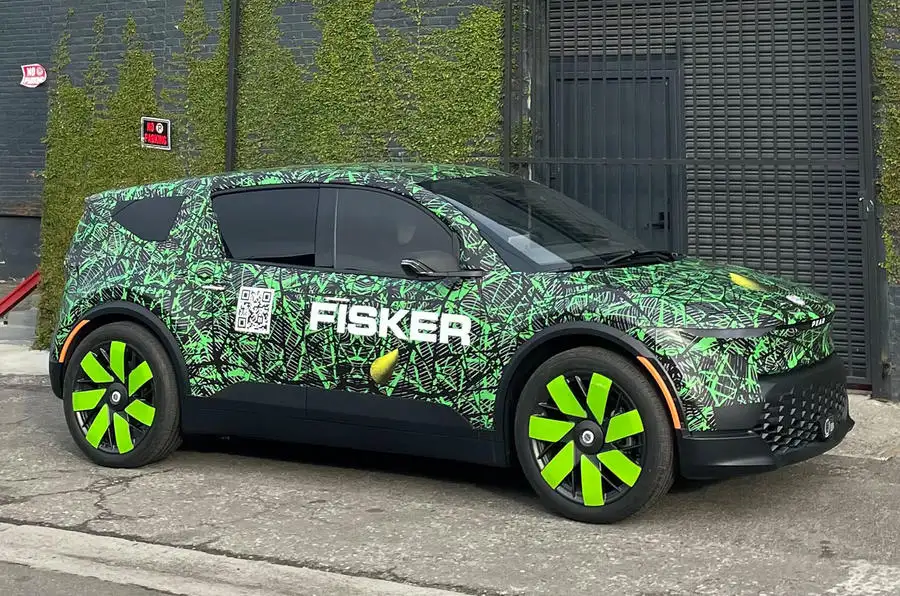Fisker’s electric hatchback will be a “futuristic little space shuttle” with many unique features.
Fisker has started road-testing its upcoming Pear electric city car, which will arrive in 2024 with a sub-$30,000 (AUD$45,000) price tag.
Making its debut in a new video clip (below), the Pear (Personal Electric Automotive Revolution) will sit below the upcoming Fisker Ocean crossover, with a shorter wheelbase than its sibling but while retaining a spacious interior.
It will be built by technology manufacturing giant Foxconn at a facility in Ohio – previously owned by General Motors – at an initial rate of 250,000 units per year the second half of 2024, with first deliveries expected soon after.
Company boss Henrik Fisker previously told us the Pear “is the vehicle that ultimately will take us to a million vehicles – we hope – per year, in 2027.”
The Pear will be based on a dedicated steel platform – cheaper than the aluminium skateboard architecture of the Ocean – which will be used to spin off a further two EVs. The prevailing focus of its development programme is streamlining the manufacturing costs to ensure it can be sold as “a premium car for under $30,000”. US prices have been confirmed to start from $29,900.
The Volkswagen ID 3-rival will also be kitted out with unique features including a boot lid that slides behind the rear bumper for better access in tight parking areas. There will be a number of innovative storage solutions in the cabin as well, and two battery options will be offered on launch: one for city driving, and the other for longer distances – which Fisker claims will have a range of more than 500km.
Fisker has appointed Alpay Uguz, previously general manager of BMW’s SUV production line in South Carolina, as a “manufacturing guru” to work with Foxconn on integrating cost efficiencies into the line, which, Henrik Fisker says, forms part of his firm’s ultimate ambition “to revolutionise automotive manufacturing and, to a certain extent, supply chain.”
Details of how the company can achieve this remain to be seen, but he said there is a “huge possibility for Fisker to have input in the factory” and the company is committed to keeping the number of components in the car to an absolute minimum.
Fisker describes the Pear as “kind of a funky vehicle” and says it is difficult to slot it into a segment: “I guess you’d call it a crossover but it doesn’t really look like an SUV. It looks like a futuristic little space shuttle – to describe it best.”
For that reason, he said, “it’s probably a little risky” because of the difficulties in benchmarking cars outside of core market segments and the fact that it has “a lot of unique features that have never been done before”.




